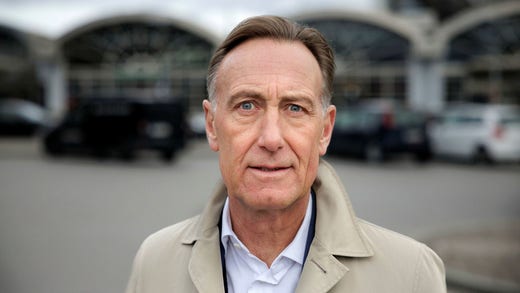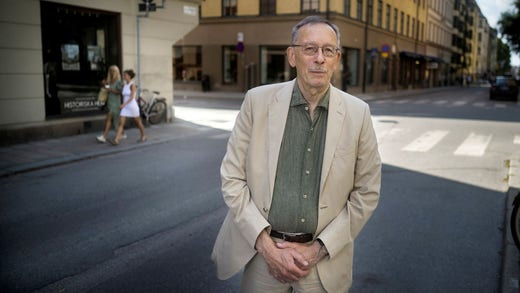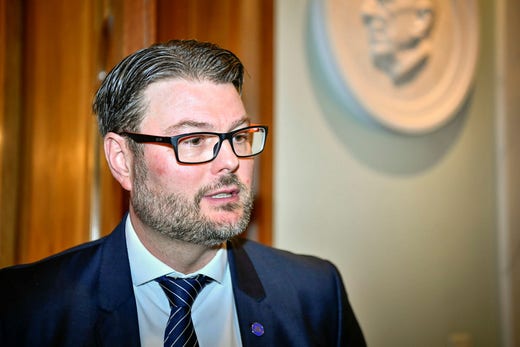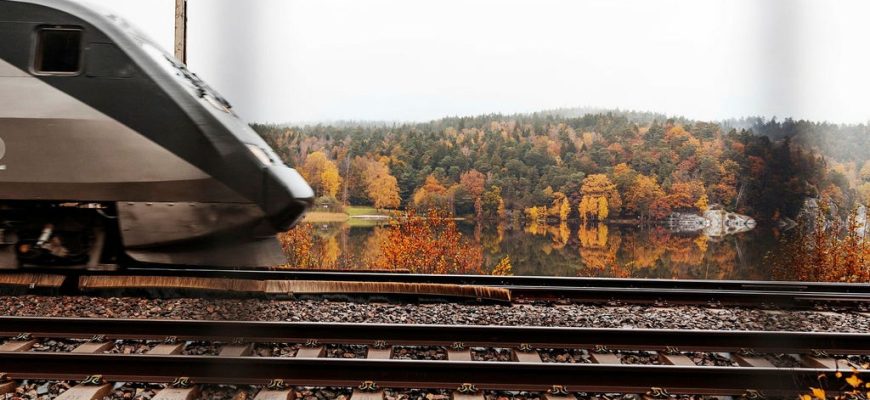After Svenskt Näringsliv’s CEO Jan-Olof Jacke argued in an interview in DN this weekend that the so-called maintenance debt for the maintenance of roads and railways should be paid by raising the so-called debt anchor from 35 to 40 percent, the debate that has been going on since last summer has gained new momentum.
He is partially supported by LO’s chairman Susanna Gideonsson.
– It is gratifying and funny that we basically think the same, we have said for many years that we need to invest more long-term in Sweden.
Photo: Thomas Karlsson
But LO chairman Is doubtful about the type of joint venture project between the state and private capital that the CEO of Swedish Enterprise also wants quick talks about, for example the new high-speed railway Oslo-Stockholm.
– When we look at larger such projects in modern times, such as Arlanda Express and Nya Karolinska, it has become incredibly expensive for the taxpayers. Business has different yield requirements and higher financing costs. There is a risk that it will be the taxpayers who bear the risk and business will take the profit.

Photo: Roger Turesson
Swedish Industry calculates that a debt anchor of 40 percent would free up around 300 billion over a ten-year period without risking confidence in the state’s finances.
– The big problem is how we guarantee that the money goes precisely to public investments and not to tax cuts. It requires that the framework be constructed so that the money goes where it is meant and not to all sorts of other things, says Susanna Gideonsson.

Photo: Magnus Hallgren
Lars Calmfors is one who has reacted to Swedish Business and Industry’s actions. professor emeritus in international economics.
– There is much in Svenskt Näringsliv’s reasoning that I agree with, says Calmfors.
– Like it is really important to think carefully about which investments should be prioritized. Many times it has not been so good, with shortcomings both in what the Swedish Transport Administration has done and what the government and Riksdag have subsequently decided on.
But when Swedish Näringsliv proposes a high so-called debt anchor from 35 to 40 percent, Calmfors wants to make a point.
– When I counted on a debt anchor of 40 percent or a little higher, it seems that a balance target is not enough, but a deficit target is probably needed. And if a lot is invested in roads and railways in a short time, it drives up prices and the money is partially wasted.
In November it will the parliamentary committee that the government appointed last fall submit its proposal on how the financial framework should be adjusted; should the surplus target become a balance target, or purely a deficit target?

Photo: Caisa Rasmussen/TT
Member for the Moderates in the committee is Edward Riedel (M), chairman of the finance committee. He does say that he agrees with Swedish Business that Sweden has an infrastructure debt that needs to be dealt with.
– How it will be done, the government will review again in the autumn in the infrastructure plan, says Riedl.
– We also need to invest in the energy system, not least because of nuclear power that has been shut down, so we will need to allocate a lot of capital just to restore nuclear power .
– But on the other question, if there are a few hundred billion to use that no one has found before? No, as you know, there are no free lunches.
The M representative points to countries that are now paying dearly for their loan interest.
– In France, government loan interest is their second largest budget item.
Edward Riedl buys not the image that Sweden has generally underinvested.
– It is important to see that during the 2000s Sweden was one of the countries that had the highest rate of public investment precisely because of our low level of indebtedness.
So you say no to the proposal to raise the debt anchor from 35 to 40 percent?
– Right now, the review of the framework is underway and it is important to have a broad base and I do not want to preempt the negotiations. We will come back to the details.

Photo: Ali Lorestani
In the same parliamentary committee Martin Ådahl from the Center Party participates. He says that they count on “roughly the same numbers†as Jan-Olof Jacke when he talks about releasing around 300 billion for the infrastructure.
However, the proposal to go from 35 to 40 percent in debt anchor is not the important thing, says Martin Ã…dahl.
– The debt anchor should be seen more as an indicated figure rather than a governing one, it is affected by other things, such as pensions and the Riksbank. But the basic idea is the right one.








